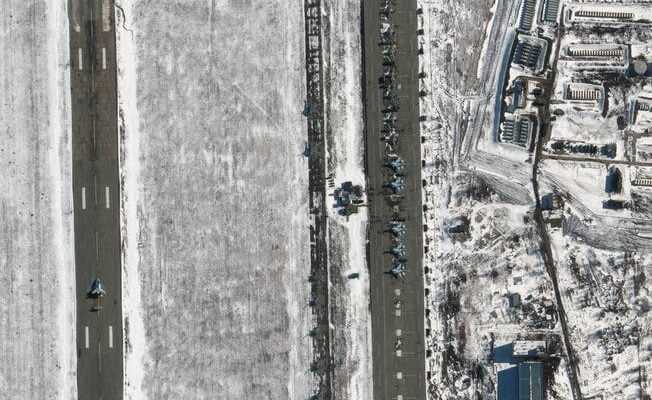In an attack on Ukraine, the Russian armed forces’ helicopters and planes would play an important role. Satellite images show they are in their launch positions.
During the Russian deployment against Ukraine, much attention has been focused on the land forces in recent weeks. But the air force would have an important role to play in an attack: If Russia gains air sovereignty over the neighboring country, its ground troops can move much more freely. At the same time, the Luftwaffe can attack defensive positions far behind the front and cut off supply and retreat routes.
Satellite images from the past few days show that the Russian Air Force has positioned attack helicopters and planes around Ukraine. There is no sign of a withdrawal, as Russian propaganda has repeatedly promised.
There is quite a crowd at the air force base in Millerowo. In addition to helicopters, numerous Sukhoi Su-25 aircraft stand close together. These jets specialize in ground combat, supporting units on the ground and providing air cover – just what is needed in a ground invasion.
Millerovo, Russia, February 18.
The Su-25 was developed and built in Soviet times. The Ukrainian Air Force also flies this model. However, it only has around 30 copies, while Russia has almost 200. The majority of these are modernized versions.
It is only 20 kilometers from Millerowo to the Ukrainian border. Not far from there begins the front line between the breakaway “People’s Republic” of Luhansk and the Ukrainian armed forces. Waluiki is about a five-hour drive north-west of Millerowo. From Valuiki it is also only about 20 kilometers as the crow flies to the Ukrainian border, i.e. a few minutes by plane.
Helicopters could be seen there on February 15 in an open field. Since helicopters have to be serviced regularly, it is costly to keep them operational on an improvised airfield for a long period of time. This indicates an early use – which of course can also be an exercise.
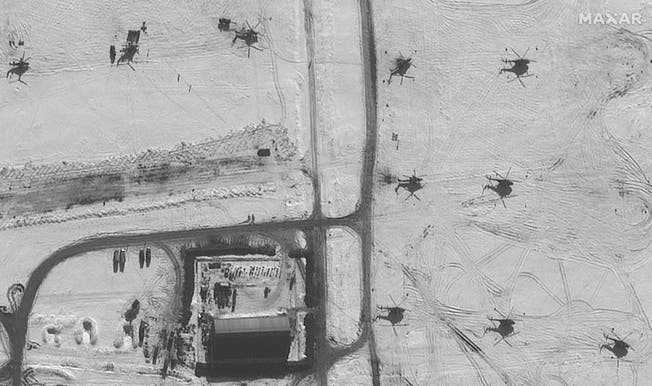
Helicopter in Valuiki, Russia, February 15.
In the south of Russia there is a large air force base in Primorsko-Akhtarsk in the Krasnodar province. Ukraine is just across the Sea of Azov, some 100 kilometers away. On February 13, 10 Sukhoi Su-34 fighter jets could be seen there, which experts said had not been there before.
Su-34 are fighter-bombers, they can both bomb targets on the ground and attack other aircraft and ships. Su-34 have a combat range of more than 1000 kilometers. With it you can reach practically every point of Ukraine from Primorsko-Akhtarsk.
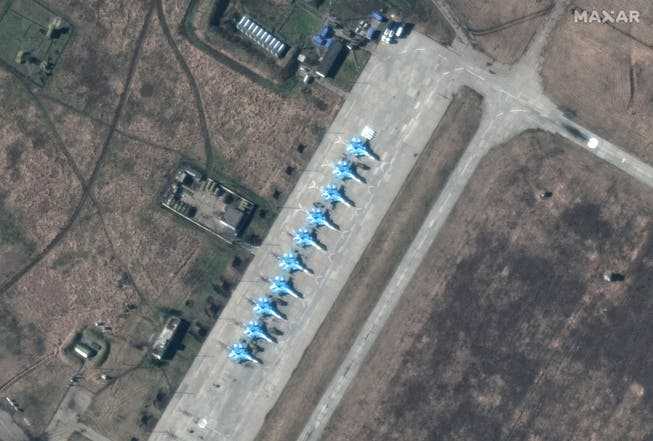
Primorsko-Akhtarsk, Russia, February 13.
Crimea, which Russia annexed in violation of international law in 2014, also serves as a deployment area. On February 18, satellite imagery showed helicopter squadrons near the southern end of Lake Donuslaw. On the one hand there are combat helicopters, on the other hand there are also models that are used for the transport and logistical support of ground troops. A total of more than 70 helicopters are currently there, 60 of which were first discovered on satellite images earlier this week.
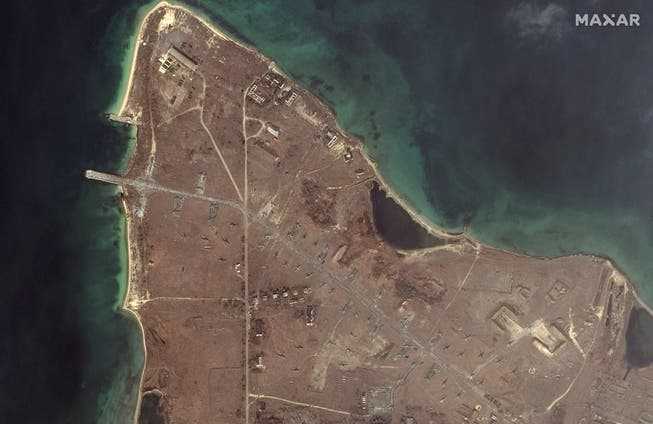
Lake Donuslaw, occupied Crimea, February 18.
The Russian air force is also within minutes at the opposite end of Ukraine, in the far north. To do this, it uses airfields in Belarus. One of them is the Luninez Air Force Base. Sukhoi Su-25 ground attack aircraft are also located there.
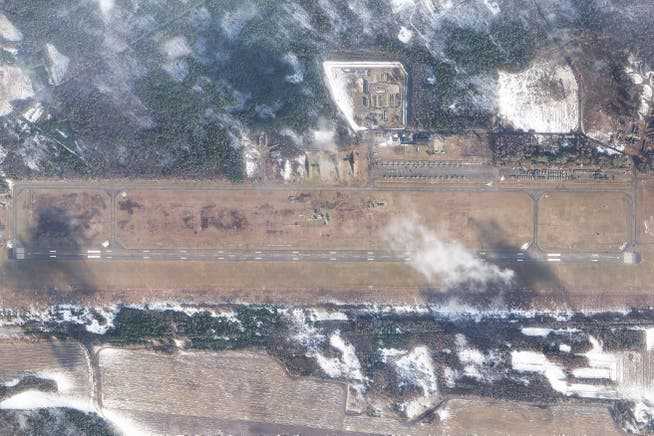
Luninets, Belarus, February 11.
This listing of Russian Air Force positions is by no means exhaustive. These are only individual examples for which current satellite images are available. These alone show, however, that Russia’s armed forces can strike at any time.
